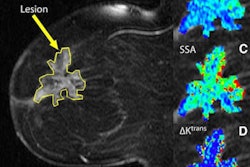With the right processes in place, requests for same-day MRI scans can be handled more than 90% of the time, resulting in productivity gains and boosting revenue for radiology departments, according to a study in the September issue of the Journal of the American College of Radiology.
Researchers at University Hospital Giessen and Marburg in Germany took productivity and quality improvement methodologies such as Lean Six Sigma that have succeeded in manufacturing and other service industries, and applied them to radiology departments. The changes increased the percentage of patients who received MRI scans within 24 hours from 53% to more than 90%, and monthly patient throughput rose by 38%.
As a result, revenue and savings increased by approximately 247,000 euros ($345,800 U.S.) in the first year of implementation (JACR, September 2011, Vol. 8:9, pp. 649-656).
Lead study author Li Zhang, PhD, in the department of diagnostic radiology, worked with colleagues to collect data from the 1,200-bed academic hospital, which has two 1.5-tesla MRI scanners (Magnetom Sonata and Magnetom Espree, Siemens Healthcare). The facility operated its two MRI systems for 19 hours, Monday through Thursday, and for 12 hours on Friday. There were no on-call hours and no exams on holidays, and no changes were made in the number of hours the department was open during the study period.
Physician priorities
Prior to performing the study, Zhang and colleagues sent referring physicians a questionnaire asking them to rank their priorities. The researchers received 73 replies, with the top concerns including patient access to an MRI scan within 24 hours (or within eight hours in more urgent cases), the need for consultation to determine the most appropriate imaging modality for the case, coordination of scheduling for an MRI exam, and the availability of an MRI scanner after 8 p.m.
Based on the responses, the group identified 14 areas where processes could be improved to heighten productivity, reduce wasted time, and meet physician and patient needs. For example, the facility prompted radiologists to improve their feedback to technologists when information was missing or insufficient. It also worked to upgrade skills for technologists who were not completely familiar with MRI procedures.
Additional checks were instituted to ensure the following:
- MRI scans were not inadvertently repeated
- Referring physicians specified the correct part of the body for MRI scanning
- Patients' whereabouts were known and confirmed prior to an exam
- MRI scan protocols were specified ahead of time and not determined at the scan by the technologist
The facility also increased its technologist staffing levels by at least one full-time position to 3.5 and to four full-time positions when volume warranted. The additional staffing "made a contribution of about 10% to the total increase in throughputs," Zhang and colleagues concluded. With 2.5 technologists, throughput was 20 patients (± 4) on an average day, compared with 23 patients (± 5) on an average day after the changes.
Tracking impact
To calculate differences in performance before and after implementation of the changes, the researchers divided the study period into three time segments: January to May 2009, prior to any revisions; June to August 2009, the transition to the new processes; and September 2009 to June 2010, when the changes were in place. The patient population consisted of 55% outpatients and 45% inpatients.
A backlog was defined as an MRI exam that occurred later than the scheduled or requested time due to a delay in radiology. The study also measured "cycle time," from when a technologist called a patient to the completion of the MRI scan, including postprocessing of images.
The changes in processes showed positive results. Cycle time decreased from a mean of 45 minutes prior to the changes to 39 minutes after new processes were implemented. Zhang and colleagues also noted that mean cycle time was 52 minutes from January to April 2009, the transition time from previous processes to new ones. Based on the numbers during that second phase, mean cycle time under the new processes improved by 25%.
Interestingly, the authors noted that productivity was unchanged as measured by MRI exam per full-time technologist position. "This implies that the workload per full-time equivalent employee did not change [prior to and after implementation of changes], while scanner productivity increased simultaneously," they wrote.
Patient throughput
At the beginning of the study period, an estimated 53% of patients had access to an MRI scan within 24 hours, with the facility averaging a total of 17 scans on a daily basis with the two machines. That increased to 90% following the changes.
Overall, monthly patient throughput prior to the changes was 349 patients (± 25), compared with 432 patients (± 43) during the transition phase. With new policies in place, monthly throughput advanced to 482 patients (± 38).
As for the financial benefit, the authors estimated that the total cost to implement the new processes was 88,000 euros ($123,200 U.S.). With the new procedures in place, the average number of daily MRI scans increased from 17 under the old procedures to an average of 22.5 MRI exams per day.
Based on a 268-day time period, the number of MRI scans increased from 4,650 prior to the changes to 6,049 under the new processes, an increase of 1,399 exams. When the financial impact is calculated for insured patients and the reduction of MRI scan delays for inpatients, revenue and savings gains total 335,000 euros ($469,000 U.S.).
|
||||||||||||||||||||
| Table courtesy of JACR. |
"A delay in the access to imaging not only possibly deteriorates care quality, but also eventually generates extra costs due to prolonged hospital stays," Zhang and colleagues wrote.
They concluded that requests for MRI exams within 24 hours can be achieved more than 90% of the time, with productivity gains and patient and physician satisfaction possible without increasing technologists' workload.



















